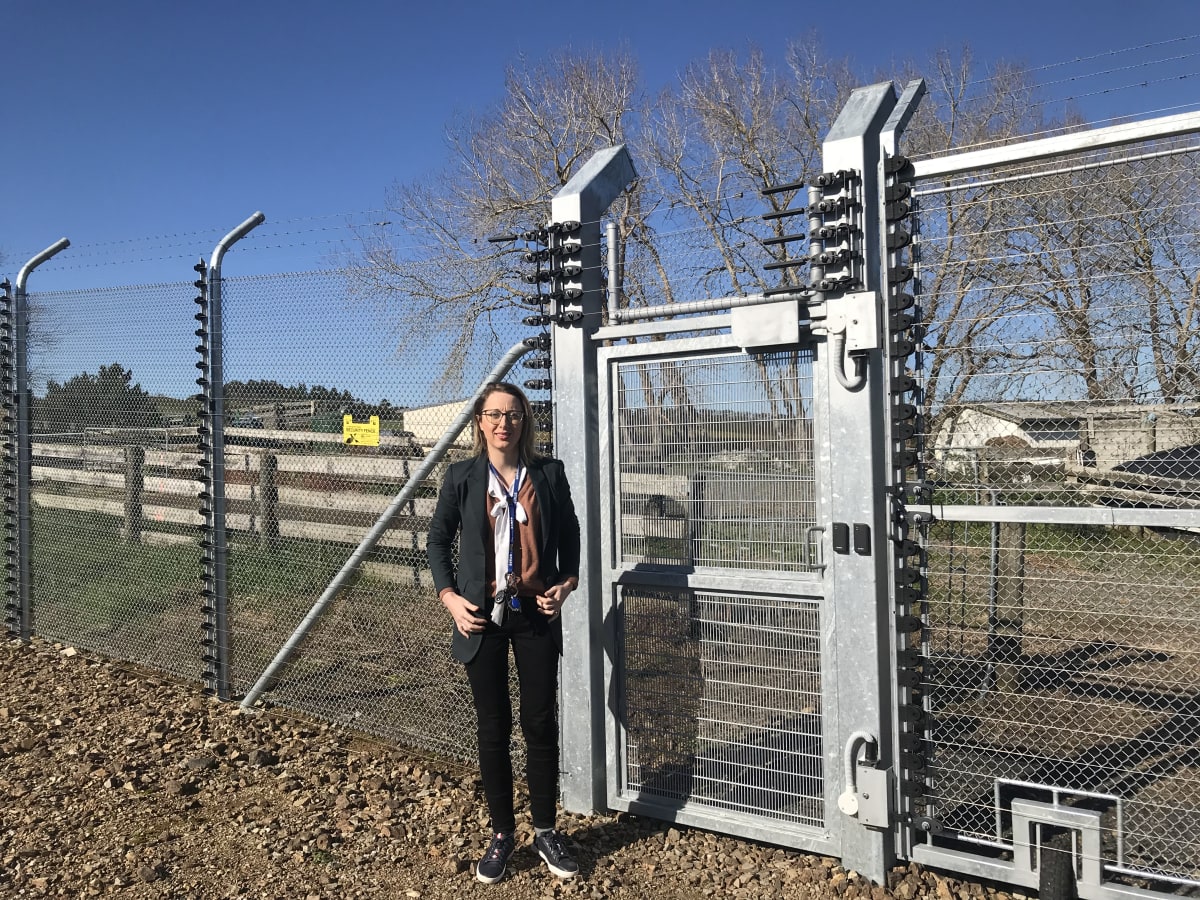
Medicinal cannabis company Ora Pharm has just won nearly $3m in grants and contracts. But being a cannabis entrepreneur is far from the high life
It was 2017 and Kiwi-born engineer Zoë Reece, recently arrived in the US, was deciding between two job offers. The first was at Harvard University, working on construction of a new, prestigious engineering and applied sciences complex. The second was for a cannabis start-up.
Her family – husband, parents, siblings, eveyakryone – advised her to take the former. Work at Harvard and you’ll never have to worry about getting a job again, they told her. Take a job in a legal marijuana business, and no one will ever hire you.
So of course, Reece took the cannabis job, becoming director of engineering at Curaleaf, in charge of building new cannabis production facilities all over the US. “With the Harvard job, the only pro was it was Harvard – it was going to involve a lot of travel and very long hours. The cannabis job, the only con was it was a cannabis company.”
Reece didn’t have much idea about the legal cannabis industry, and misconceptions she had at the time are still pretty widespread, she says.
“It’s not what people expect. We got that all the time at Curaleaf – people walking into the office and saying ‘Are you sure this is a cannabis company?’ They are expecting people to be sitting around, not working.
“I went in with that stigma, that medicinal cannabis is just stoners trying to get high legally.”
The perception is completely wrong, Reece says. Growing a cannabis company is just as serious and as much hard work as growing any other business. Perhaps more, given the strict regulatory framework.

In the two years she worked at Curaleaf, now the largest cannabis business in the world, the company went from having 220 employees at 16 facilities in six states, to having 3500 staff working across 83 facilities in 16 states.
Reece was involved in everything from liaising between state officials and Curaleaf bosses, to the design, build and running of the company’s greenhouses and manufacturing facilities. It was high-stress – lots of travel and long hours – and she loved it.
But she had business in her blood (Jo Bransgrove, her mum, was on several boards and president of the Wellington Chamber of Commerce) and Reece wanted to run her own company. So in 2019, as the debate heated up over New Zealand’s own cannabis reform, she headed back to New Zealand with her husband, leased 45 hectares of farmland south of Auckland and set up her own medicinal cannabis company, Ora Pharm.
And that’s when it got tricky. Producing medicinal cannabis products, or even good-quality flowers for export, needs investment capital: for greenhouses with sophisticated lighting, temperature, watering and feeding systems; for pharmaceutical-grade manufacturing facilities; for high-security fencing; and for research and development.

Ora Pharm could quite easily chew through $15-20 million in buildings, technology and R&D to grow the business over the next four years – construction and fit-out for a single one-acre greenhouse costs $5m and Reece would like three of them, each with up to 20,000 cannabis plants.
She hopes to have the first greenhouse built next year, but has found getting local financiers interested in a product that was illegal recreationally for almost 100 years and in medicinal form since 1975 wasn’t easy.
Meanwhile, interest from international investors has been slow – Covid lockdowns meant no one could visit the company’s operations in New Zealand and Reece couldn’t do roadshows or pitches overseas.
Being a female entrepreneur, particularly a young female entrepreneur, also makes things tough when it comes to raising money from investors, who are still mostly older men, as this University of Auckland study published in 2021 and Newsroom’s recent story revealed.
Then there’s the whole cannabis investment market internationally, which has slid backwards over the past 12 months, as expected legislative reform from US President Joe Biden’s administration failed to materialise.

The US analyst Camilo Lyon calls the market downturn a “regulatory recession” based on sentiment, not market fundamentals. He says cannabis company stocks still trade at low multiples to their earnings, and many companies have seen growth rates of 60 percent.
“If there were any doubt about the demand profile for the category, one only needed to visit an adult-use dispensary this past weekend in New Jersey to see hour-long lines of people waiting to buy legal cannabis,” Lyon said in an April 26 research note. “Cannabis, with its many federal and state regulatory restrictions still in place, has been driven into recession by slow-moving policy changes.”
Still, for Ora Pharm and other New Zealand medicinal cannabis companies, the international market is a big source of present and future revenue, so bad news for cannabis investors overseas hasn’t helped Reece’s capital-raising cause.
And at the same time, the regulations are still pretty strict in New Zealand. Medical cannabis companies aren’t able to market or advertise their products, even to doctors, unless they get costly and time-consuming approval from Government, and the high standards required for legal cannabis means illegal products are still cheaper for customers.
Some good news
So this week’s news of a $140,000 grant from Callaghan Innovation and a $2.6m deal with US cannabis technology company Agrify is welcome news for Ora Pharm.
The Callaghan grant is to “develop environmentally friendly, innovative technology for cultivation of medicinal cannabis that will ensure consistent quality, potency and yield of medicinal cannabis in our unique New Zealand environment ... reducing the volume of raw materials that need to be imported”.
Meanwhile, the debt funding agreement with Agrify, a US company that makes computer-controlled indoor cannabis farming units, will see Ora Pharm buy $2.6m-worth of Agrify equipment, technology and software and pay it off over the next 12 months. This includes extraction and processing equipment so the company will be able to take oil from the cannabis flowers and creative finished pharmaceutical products.

The Agrify vertical farming units and clean extraction technologies allow cannabis growers to control the various internal and external factors to help produce quality and consistent products, Agrify CEO Raymond Chang said in a statement.
The companies said the new equipment will also be critical for Ora Pharm’s R&D programme into the minor cannabinoids, allowing precise control and data collection.
At the same time, the search for more investment funding continues, Reece says.
“It’s been hard. The minimum we need for this round is $2m and we have $1.1m committed. The maximum is $7m.
“The best-case scenario is someone comes up with investment to fund our first big greenhouse. The worst case is we self-fund it, but we have to wait another year.
“It would be good to get funding from New Zealand, but realistically I don’t think getting the rest of the investment from here is possible.”
Reece is hoping to have its first Ora Pharm-branded products available for New Zealand customers in the next six to nine months.

Taking regulation slowly
And the recreational cannabis legalisation timeframe – or lack of it? Surprisingly, Reece isn’t frustrated by the result of the October 2020 referendum, which saw moves towards legalisation of recreational marijuana defeated 51.2 percent to 48.8 percent (excluding invalid papers). Medicinal cannabis was only recently legal by the time the country voted on recreational use, and Reece reckons having a period of time for people to get used to medicinal cannabis before the issue gets confused with the recreational side is a good thing.
“If recreational cannabis regulation had come through straight after medicinal legislation, but when that programme was not fully in place, I think that might have been bad for stigmatising our product.
“This way, as happened in the US and globally, there will be an established medicinal programme before adult [recreational] cannabis comes in, so society will have had a chance to accept it,” Reece says.
“So many people will have had a grandma who uses it for arthritis, or a cousin using it to get through cancer, or mum going through menopause where cannabis helps them sleep, or dad has a back problem and can finally get out of bed.”
Reece herself has used medicinal CBD in the past to help manage pain from endometriosis.
“It was at the end of 2018 and I was in the middle of a flare-up. Curaleaf had put out a CBD product and they had given me a sample to take home. I decided to give it a go and within 15 minutes was able to get up and chase the dog around.”
Not your normal farm
To get to Ora Pharm you drive down the motorway towards Hamilton, come off at Pokeno and then head for miles down country roads. There’s no sign on the gate (by law you can’t advertise your premises or even have signage on cars), no name or identifying details around the property, just a long, unremarkable driveway leading to an unremarkable house, some cattle pens, a stable block, and a lot of scruffy paddocks.
It’s a typical farm, with an atypical fence – high-strength mesh topped with barbed wire, and a gate Donald Trump would be proud of at the Mexican border. This barricade was built by a company more used to installing fences around prisons than farm buildings, and it surrounds a large shed where the marijuana plants are growing.
A remote location and heavy security is part of the regulations too.

Inside the security fence, the vibe switches from lock-up to lab coat. Staff and visitors wear white overalls, hairnets, gloves, and shoe coverings – all designed to keep the place clean and the plants pathogen-free.
With the right light, temperature, water and nutrient levels, indoor cannabis plants flower every 10 weeks – not once a year as they do outside. The latest harvest is just over when I visit, but the nursery rooms are full – hundreds of little plants either waiting to be put into the main space, or part of the research and development programme.
In the R&D room, plants are grown and tested for characteristics such as speed of flowering, or disease resistance, Reece says. Others are studied and developed to produce the particular cannabinoid Ora Pharm or its customers want.
“Mother plants”, the end-results of this breeding research, will be cloned to produce the different plants that will be grown in Ora Pharm’s commercial greenhouses. The last thing you want if you are producing pharmaceutical-grade product, is inconsistency.
Reece says the more commonly known THC (tetrahydrocannabinol) and CBD (cannabidol) compounds produced from cannabis are just some of dozens of different products that can be found in cannabis flowers.
For example, both THC and CBD are used in pain relief, but cannabinoids CBN, CBC and CBG(A) are also thought to have analgesic properties. Meanwhile, CBD can reduce inflammation, but so can CBG, CBC, CGC, and others.
It’s complicated.
Research into the potential health benefits of many of these cannabinoids is still at an early stage, and Reece is keen for Ora Pharm to be at the cutting edge of what’s happening in New Zealand.
“The industry changes so fast. In the US, for example, everything changed dramatically in the early years after legalisation. What doctors were prescribing in the beginning differed greatly from what they were prescribing five years in.
“Science and education and technology around growing and production changes on a daily basis and if you aren’t doing R&D you will be left behind.”
In the meantime, Reece believes the Government has done a good job setting the regulatory framework.
“They looked around the world and took lessons from other countries.”
And compared with how the process works in the US, where a lack of federal rules means Reece was dealing with 16 regulatory frameworks and 16 licensing authorities, working in New Zealand is a breeze.







